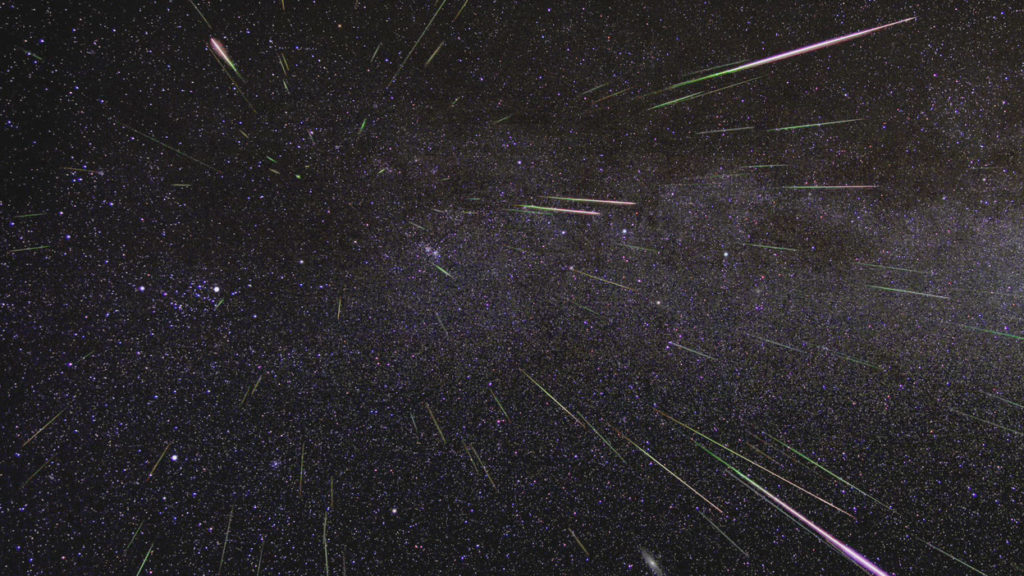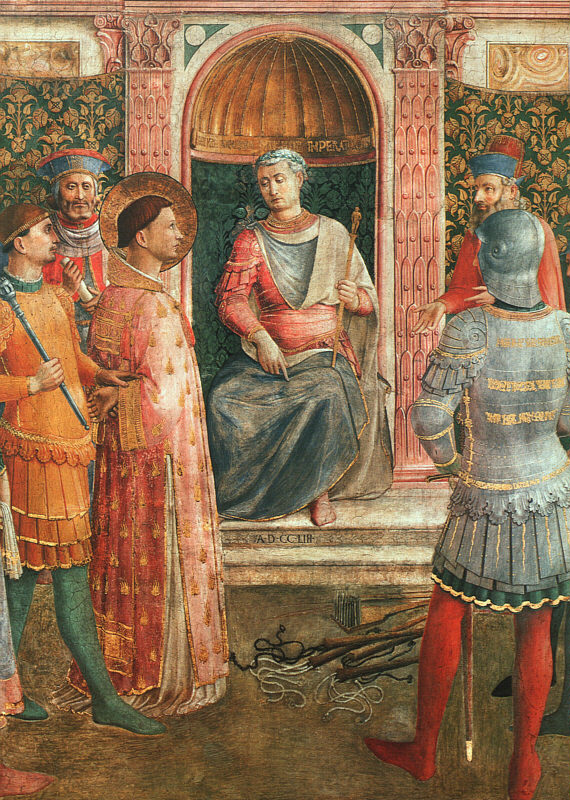
It’s the best celestial show of the northern summer months, one that can be enjoyed without a telescope, camera, or much expertise in celestial matters at all. It’s the Perseid meteor shower, an annual event in which sand-sized bits of an ancient comet streak through the Earth’s upper atmosphere and elicit “oohs and ahhs” from experienced and untutored stargazers alike.
It’s also an event that connects us to anonymous stargazers back through an undetermined number of centuries. One of the most famous tales involving the Perseids comes from early Christianity who connect this celestial event to the date of the martyr of Laurentius, one of the seven deacons of the city of Rome in the third century A.D. In 258 A.D., to distract the masses from constant war under his reign, the Roman emperor Valerian ordered the merciless execution of dozens of leaders of the Catholic church including Laurentius, who was then just 33 years old. The Roman authorities, rarely subtle and unfettered by mercy, tortured Laurentius by roasting him alive on a gridiron. Though doomed and in great pain, Laurentius taunted his captors and cried out, “I am already roasted on one side and, if thou wouldst have me well cooked, it is time to turn me on the other.”
With that brave comment, Laurentius, who we now call St. Lawrence, became the patron saint of comedians. But the date he died, August 10, was also known throughout the world for an annual display of meteors or “shooting stars”. In medieval Europe, this meteor display became known as the fiery “Tears of St. Lawrence”. We now call them the Perseid meteor shower, the finest meteor shower of the year, visible from late July through mid-August.

Like most meteor showers, the Perseids are simply dust-sized pieces of icy debris expelled from a comet, in this case, Comet Swift-Tuttle. As the Earth passes through the comet’s debris once each year, some particles streak through our atmosphere and heat up, leaving a transient bright streak we call a meteor. The tiny particles completely burn up in the atmosphere. Very few, if any, make it to the Earth’s surface. Some hit the Moon, since it has no atmosphere to impede the meteors, though they’re too faint to see, even with a telescope.
While the Perseids move into the Earth’s atmosphere on parallel paths, they appear to radiate from a single point called a radiant. The effect of seeing a meteor shower is similar to seeing falling snowflakes as they appear to radiate from a point in front of your windshield as you drive into a snowstorm. The radiant of the Perseid meteors is found in the northern constellation Perseus. In images of meteor showers, you can see how all the meteors trace their way back to a single point. If you see a meteor whose direction can’t be traced back to the radiant in Perseus, it’s not a Perseid.
The Perseids build slowly, starting in late July when you might see three or four an hour. They peak when Earth passes through the thickest part of the debris stream some time between August 11-13. At the peak of the show, in clear, dark sky, you might see as many as 60 meteors an hour.

For the best view, observe late on August 11-12 and the early morning of August 12-13. After midnight is best: that’s when the Earth turns into the stream of particles from Swift-Tuttle.
Avoid ambient light if you can. Lie on a reclining chair or a blanket on the ground, and simply look up. You don’t need binoculars or a telescope. You don’t need to look right at Perseus: the meteors can appear anywhere in the sky. Those with long streaks come into the atmosphere at an oblique angle. Those with shorter streaks enter the atmosphere at a steep angle and come more directly towards you (no, they will not hit you).
Because the radiant lies in Perseus, northern-hemisphere observers get the best view, though southerners will see some, too.
It’s the best celestial show of the summer. So hope for clear skies, and get out and see the Perseids if you can.
Share This: